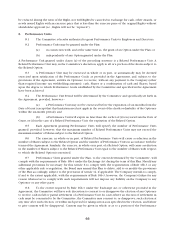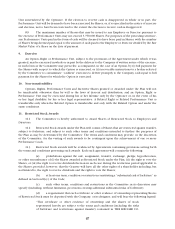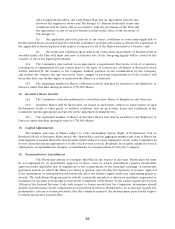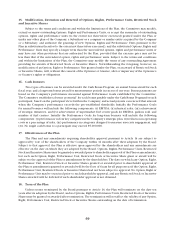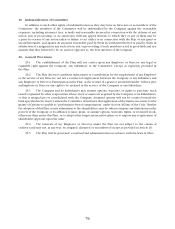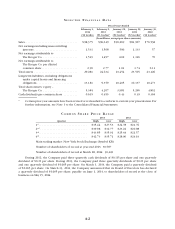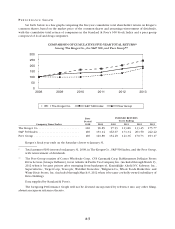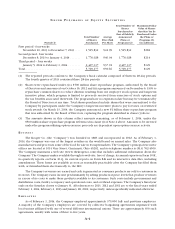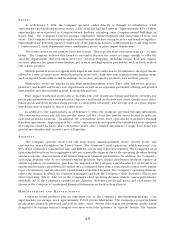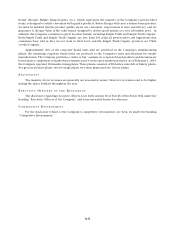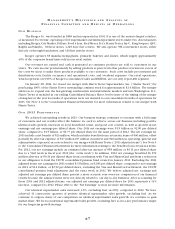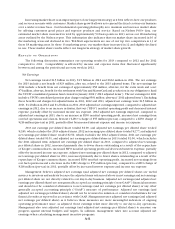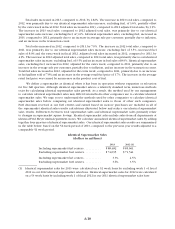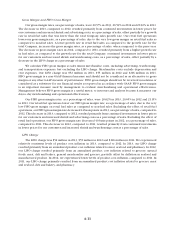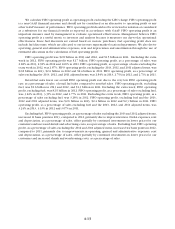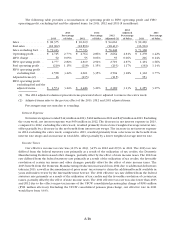Kroger 2013 Annual Report Download - page 78
Download and view the complete annual report
Please find page 78 of the 2013 Kroger annual report below. You can navigate through the pages in the report by either clicking on the pages listed below, or by using the keyword search tool below to find specific information within the annual report.A-5
ST O R E S
As of February 1, 2014, the Company operated, either directly or through its subsidiaries, 2,640
supermarkets and multi-department stores, 1,240 of which had fuel centers. Approximately 45% of these
supermarkets were operated in Company-owned facilities, including some Company-owned buildings on
leased land. The Company’s current strategy emphasizes self-development and ownership of store real
estate. The Company’s stores operate under several banners that have strong local ties and brand recognition.
Supermarkets are generally operated under one of the following formats: combination food and drug stores
(“combo stores”); multi-department stores; marketplace stores; or price impact warehouses.
The combo stores are the primary food store format. They typically draw customers from a 2 – 2½ mile
radius. The Company believes this format is successful because the stores are large enough to offer the
specialty departments that customers desire for one-stop shopping, including natural food and organic
sections, pharmacies, general merchandise, pet centers and high-quality perishables such as fresh seafood
and organic produce.
Multi-department stores are significantly larger in size than combo stores. In addition to the departments
offered at a typical combo store, multi-department stores sell a wide selection of general merchandise items
such as apparel, home fashion and furnishings, electronics, automotive products, toys and fine jewelry.
Marketplace stores are smaller in size than multi-department stores. They offer full-service grocery,
pharmacy and health and beauty care departments as well as an expanded perishable offering and general
merchandise area that includes apparel, home goods and toys.
Price impact warehouse stores offer a “no-frills, low cost” warehouse format and feature everyday low
prices plus promotions for a wide selection of grocery and health and beauty care items. Quality meat, dairy,
baked goods and fresh produce items provide a competitive advantage. The average size of a price impact
warehouse store is similar to that of a combo store.
In addition to the supermarkets, as of February 1, 2014, the Company operated through subsidiaries
786 convenience stores and 320 fine jewelry stores. All 144 of our fine jewelry stores located in malls are
operated in leased locations. In addition, 83 convenience stores were operated by franchisees through
franchise agreements. Approximately 54% of the convenience stores operated by subsidiaries were operated
in Company-owned facilities. The convenience stores offer a limited assortment of staple food items and
general merchandise and, in most cases, sell gasoline.
SE G M E N T S
The Company operates retail food and drug stores, multi-department stores, jewelry stores, and
convenience stores throughout the United States. The Company’s retail operations, which represent over
99% of the Company’s consolidated sales and EBITDA, are its only reportable segment. The Company’s retail
operating divisions have been aggregated into one reportable segment due to the operating divisions having
similar economic characteristics with similar long-term financial performance. In addition, the Company’s
operating divisions offer to its customers similar products, have similar distribution methods, operate in
similar regulatory environments, purchase the majority of the Company’s merchandise for retail sale from
similar (and in many cases identical) vendors on a coordinated basis from a centralized location, serve similar
types of customers, and are allocated capital from a centralized location. The Company’s operating divisions
reflect the manner in which the business is managed and how the Company’s Chief Executive Officer and
Chief Operating Officer, who act as the Company’s chief operating decision makers, assess performance
internally. All of the Company’s operations are domestic. Revenues, profit and losses and total assets are
shown in the Company’s Consolidated Financial Statements set forth in Item 8 below.
ME R C H A N D I S I N G A N D M A N U F A C T U R I N G
Corporate brand products play an important role in the Company’s merchandising strategy. Our
supermarkets, on average, stock approximately 13,000 private label items. The Company’s corporate brand
products are primarily produced and sold in three “tiers.” Private Selection is the premium quality brand
designed to be a unique item in a category or to meet or beat the “gourmet” or “upscale” brands. The “banner


